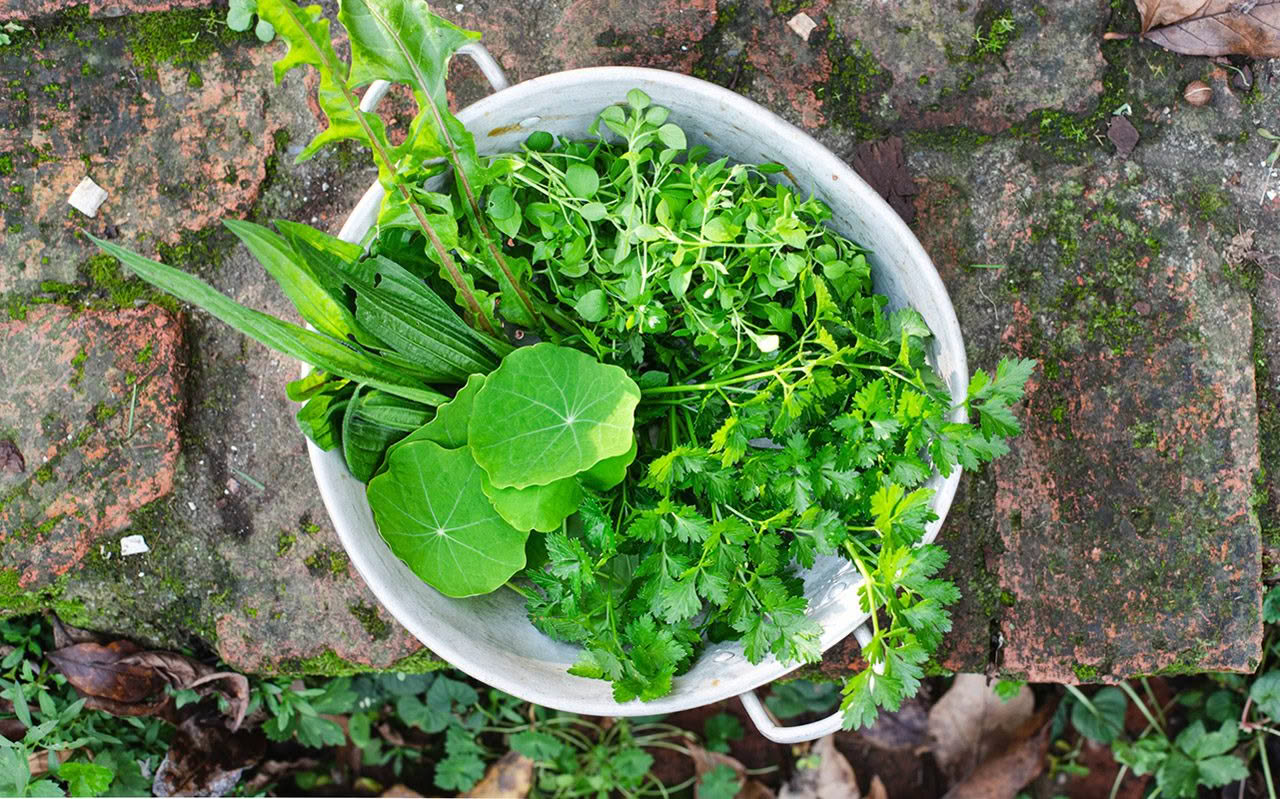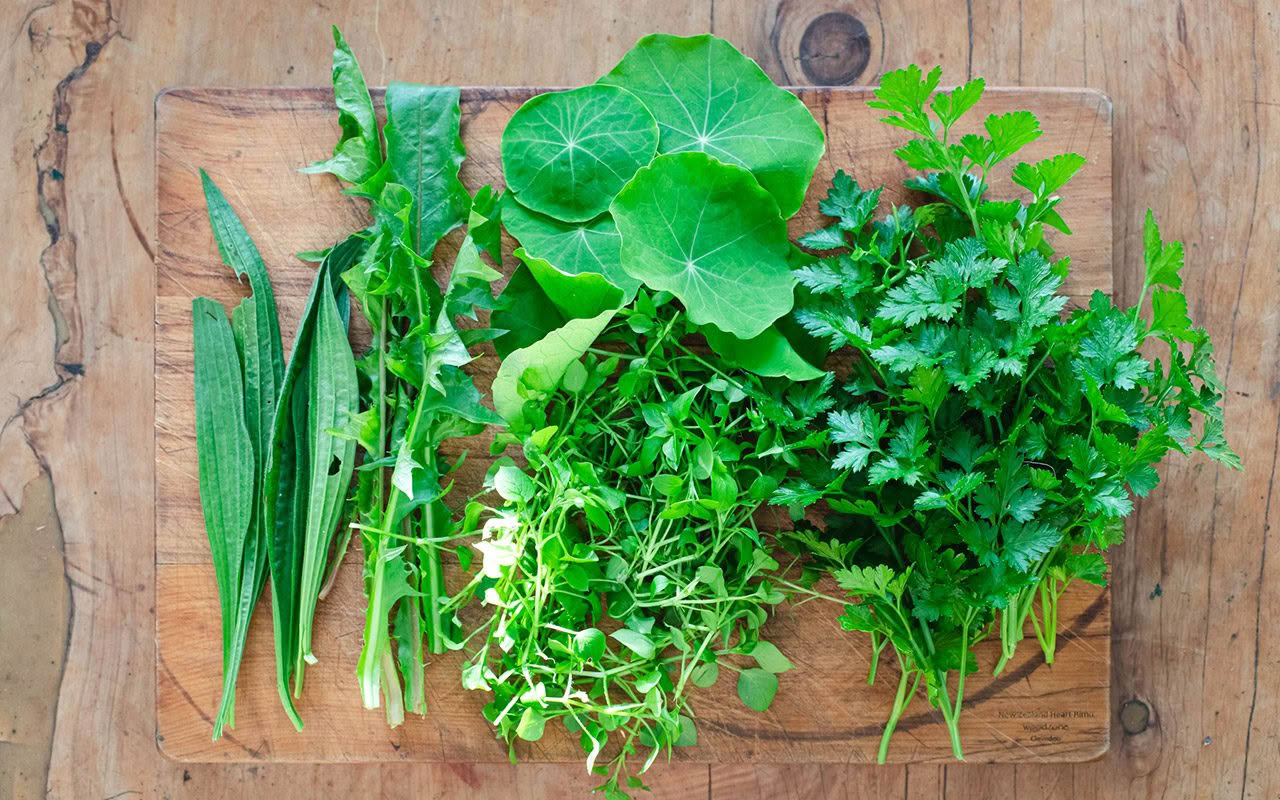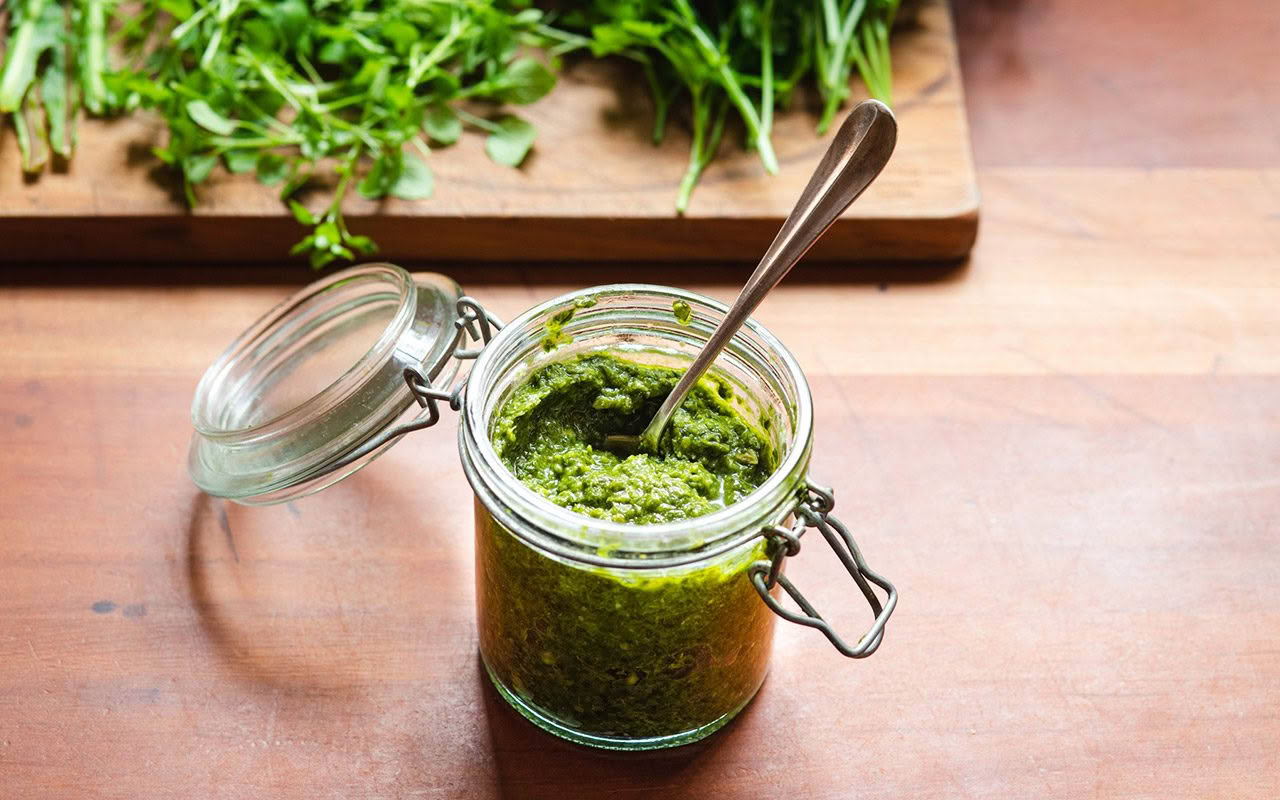Nicola Galloway: A foraged garden herb and wild weed pesto

Basil isn’t the only key herb for a delicious green pesto packed with goodness – try finding unexpected edibles in the garden as well.
Words and Images: Nicola Galloway
I have recently enjoyed reading Helen Lehndorf’s memoir, A Forager’s Life. It was a wonderful reminder of all the foragable edibles we have at our fingertips. Equipped with some knowledge for identifying edible weeds, buds and flowers, plus a willingness to be curious, foraging is a satisfying pastime and essential life skill free for all.
I was introduced to wild harvesting and identification around 20 years ago while volunteering at our local Waimarama Community Gardens (Whakatū Nelson). I had just returned to my hometown after travelling for a number of years and had come home with a keen interest in organics and growing food. Without a garden of my own at the time, volunteering at the gardens seemed the natural fit.
The volunteer group would gather on Wednesday mornings to make up large bags of salad greens to sell to the community – at $5 each this was a bargain. The garden manager at the time was John Massey and his style of wild gardening was possibly a little bit radical. But I do believe he was ahead of his time with a focus on creating as much diversity in the gardens as possible. That meant there were a lot of weeds.
To the untrained eye, the garden looked unruly and unkempt. To John, and those he shared his knowledge with, myself included, it was a garden of edible abundance. Along with a selection of salad leaves purposely grown for the salad bags, there were additions of edible weeds and flowers. From memory, they were vibrant and colourful and included the likes of chickweed, purslane, dandelion, plantain, mallow, miner’s lettuce, cleavers, calendula, borage and nasturtium flowers. And more, depending on the season.

At the end of the harvest morning with the salad bags packed and ready for collection, we would share lunch together. This always consisted of a large bowl of salad, often a wild weed pesto, along with a pie or quiche, or soup in winter. Always delicious and shared in good company.
This experience has sparked a lifelong interest in looking around my environment to find edibles. Both in my own garden where I have learned to share the space with weeds, while keeping the noxious ones under control. And I am always looking out for public (free for all) fruit trees of which there are many when you start to notice – following the universal foragers rule to take some and leave some for others.
Resources for identifying edible weeds and more:
The Forager’s Treasury – The essential guide to finding and using wild plants in Aotearoa by Johanna Knox
Homegrown Botanica (website) – Felicity Joy runs wild foraging workshops in Kapiti, Wellington and beyond. She also has foraging guides on her website
Fungi of Aotearoa – A curious forager’s field guide by Liv Sisson. A new book that I am looking forward to learning more about the fascinating subject of fungi.

GARDEN HERB AND WILD WEED PESTO
I always have some type of homemade pesto or green sauce in my fridge. In summer this will be made with traditional basil, and pine nuts on occasion, but really anything goes as long as it is green. For every day I like to use toasted pumpkin or sunflower seeds, and most of the year parsley makes up the base herb. I have nurtured parsley in the garden to now have a constant supply letting plants self-seed around the garden. Italian parsley is my preference for its softer leaves, but curly is fine too.
In addition, I will add some edible weeds and flowers. If you are familiar with identifying edible weeds, wander around your garden or the edges of a local park (avoiding areas that are sprayed) and see what you can find. I found chickweed quite abundant again after the recent rain, but it won’t last long with the colder nights. I also added a few leaves (they can be quite strong in flavour) of dandelion, nasturtium and plantain. The ratio I use is around 3-4 parts parsley to 1 part edible weeds/flowers.
Prep time: 15 minutes
Makes about 250g
INGREDIENTS
(3-4 parts) bunch of parsley, about 1 cup lightly packed
(1 part) selection of edible weeds and flowers – see suggestions above
juice of ½ a lemon, or 1-2 tbsp apple cider vinegar
2 garlic cloves, peeled and squashed
2 tsp capers, rinsed (used for the umami flavour that would come from parmesan)
⅓ cup toasted pumpkin seeds (or sunflower)
salt to taste
100 – 120ml extra virgin olive oil
METHOD
Wash the herbs and weeds, removing any tough stalks. Place into a food processor with the lemon juice/vinegar, garlic, capers, pumpkin seeds and a generous pinch of salt.
Blend into a rough paste then with the engine running drizzle in olive oil until the mixture comes together into a vibrant green sauce.
Check taste, adding extra lemon juice/vinegar and/or salt to taste.
Scoop into a jar and store in the fridge. Use within 1 week.
Great in sandwiches, as a side to eggs, dolloped onto soups, stews and bean dishes.
Nicola Galloway is an award-winning food writer, cookbook author and culinary tutor. Find more seasonal recipes on her website.

